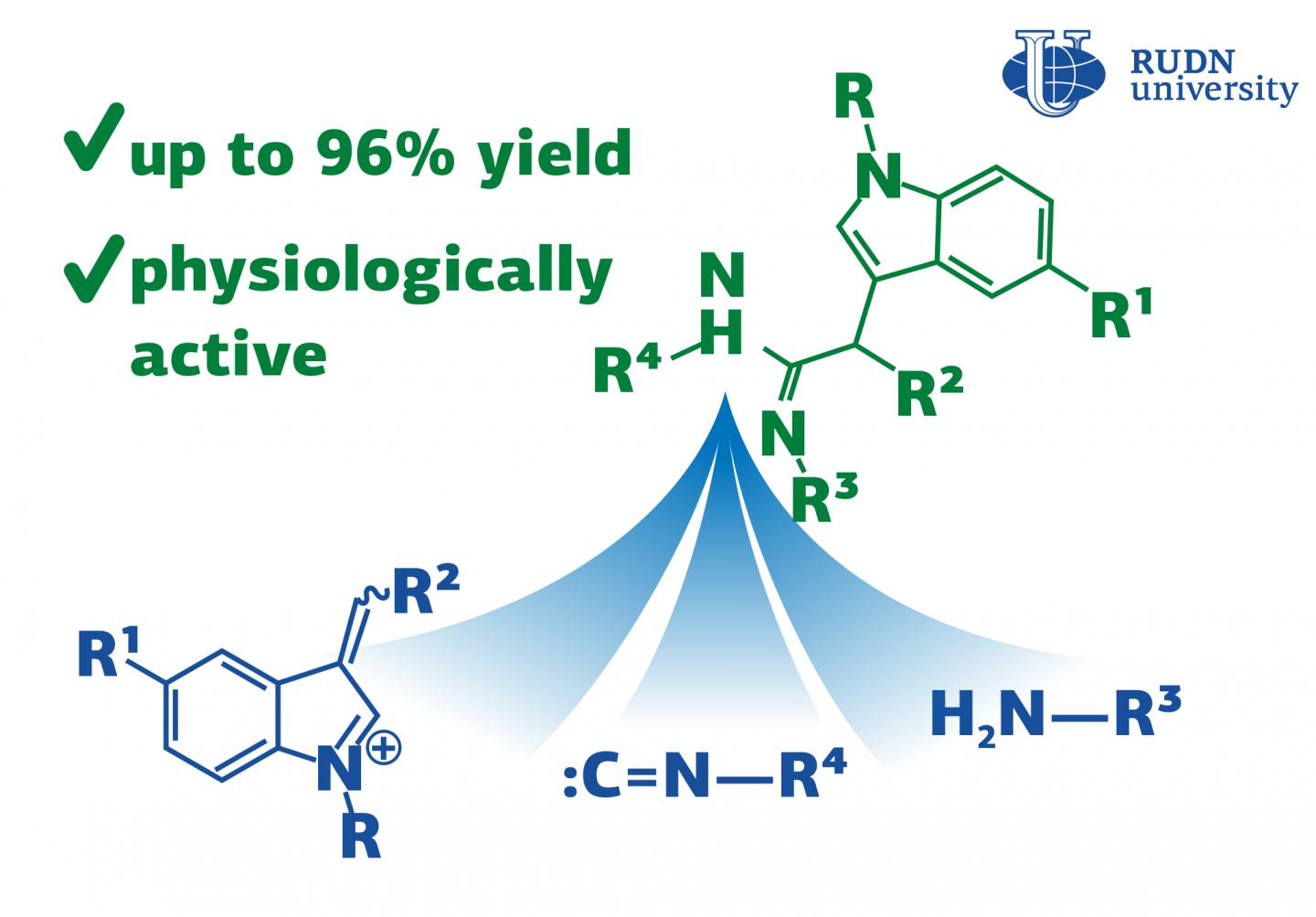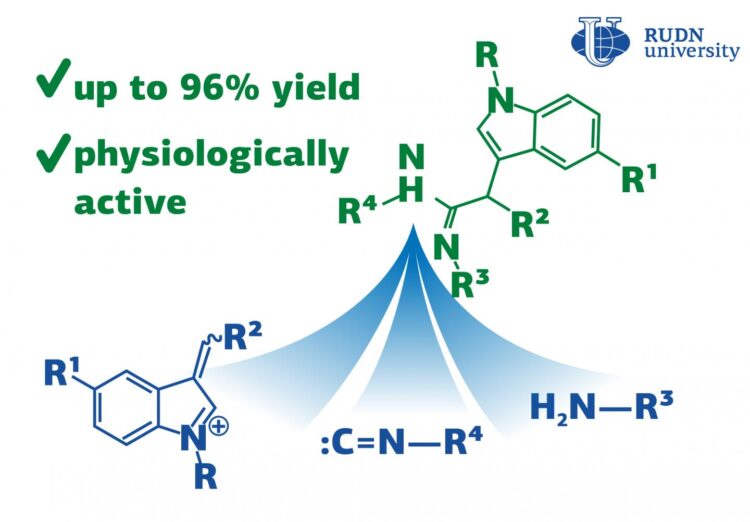
Credit: RUDN University
RUDN University chemists obtained a metal-containing complex with an unusual planar architecture. The unexpected structure was formed due to the spontaneous fixation of carbon dioxide from the air during the reaction. This compound exhibits unusual magnetic properties (spin glass behaviour). This can be useful for creating memory storage devices. The results are published in the Journal of Organometallic Chemistry
Coordination polymers are hybrid crystalline coordination compounds contained of infinitely repeating fragments (structural elements). These structural elements include metal centers and organic linking “bridges”. Coordination polymers are used for catalysis, separation of gas mixtures, manufacturing of sensors and storage of “guest” molecules. Some coordination polymers turn out to be molecular magnets with a linear chain structure (single chain magnets, SCM) — these are the promising objects for creating high-capacity memory storage devices. While studying the peculiarities of the synthesis of coordination polymers, RUDN University chemists obtained a new metal-containing compound with an non-trivial architecture, which turned out to be an unusual molecular magnet (“spin glass”).
“Design of isolated molecular architectures based on transition metal ions by using organic and inorganic ligands attracts a great deal of attention of research groups due to their potential applications including electronics, data storage, catalysis, contrast agents, sensors and others”, said Prof. Alexey Bilyachenko, a leading researcher of the Joint Institute for Chemical Research at RUDN University.
The RUDN University chemists investigated the traditional protocol for design of coordination polymers. They used organic compounds with coordinating centers as bridging ligands. As for a metal-containing center they used an unusual organo-inorganic compounds (metallasilsesquioxanes). The researchers used phenylsilsesquioxane containing nickel and sodium ions. At the last stage, chemists added pyridine, a colorless organic liquid with coordinating properties. As a result, a yellow crystalline product was isolated, the molecular structure of which was established by single crystal X-ray diffraction study.
Compound obtained by RUDN University chemists turned out to have an unusual architecture. The complex has a planar structure resembling a square. In the center of the square is the sodium cation. The chloride anion which balances the charges in the complex is located above the plane of the square. The four nickel ions forming the square structure are coordinated by pyridine ligands and are additionally connected via carbonate bridges. The appearance of carbonate structural units (which were not used as reagents in the synthesis) is the most interesting effect in this reaction. Chemists suggested that unusual carbonate bridges appeared due to the fact that during the reaction there was a spontaneous capture of carbon dioxide from the atmosphere. The resulting carbonate fragments are key to the complex creation, forming the “sides” of the square. In this case, carbonates not only bind the angular nickel ions, but also coordinate the central sodium ion. The chemists studied the magnetic properties of the crystals using the SQUID MPMS-XL magnetometer. It turned out that the new crystal is a molecular magnet that exhibits spin glass behavior.
“To our surprise, performed reaction causes a deep structural rearrangement with the formation of a tetranuclear nickel complex linked by carbonate bridges. Isolation of this strcuture could not be explained by the formal logic of synthesis and, most likely, carbonates were formed by the reaction of sodium ions with atmospheric CO2. In all likelihood, subsequent exchange reaction of sodium bicarbonate species with nickel ions results in formation of resulting compound. The arrangement of magnetically active nickel ions in the planar square structure provides an unusual magnetic behaviour of the complex”, said Prof. Alexey Bilyachenko, a leading researcher of the Joint Institute for Chemical Research at RUDN University
###
Media Contact
Valeriya Antonova
[email protected]
Related Journal Article
http://dx.





